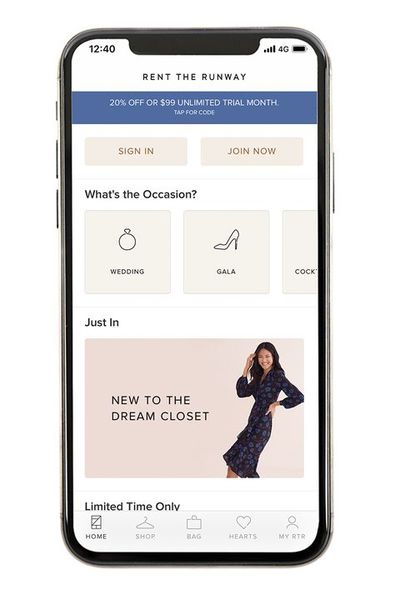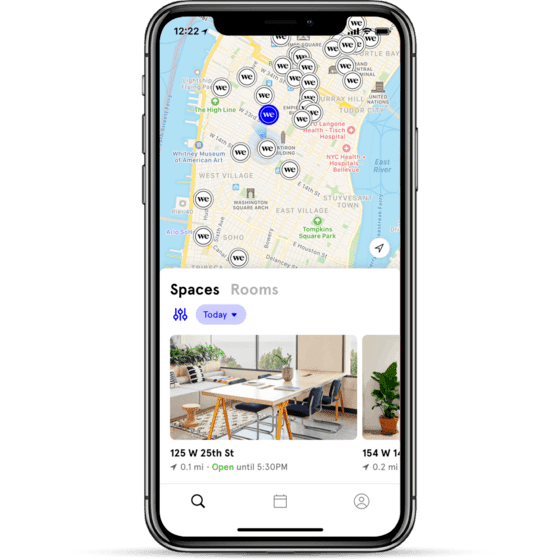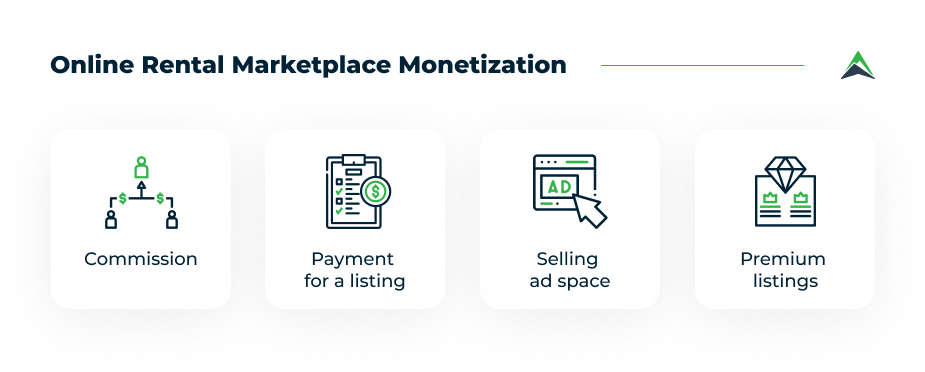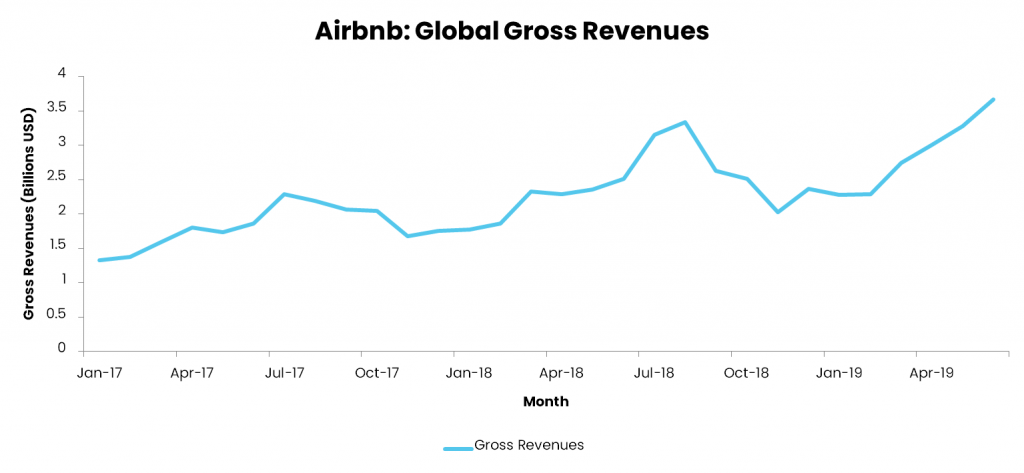Why rental platforms and why now?
Young generations now care more about the environment and carbon footprint, while looking for ways to save money. In this case, renting and the sharing economy are the best options to get high quality for a lower price. As a result, around 70% of millennials and Generation Z respondents prefer renting over buying.
And the market is ready to follow the latest trends. People now can rent vehicles, clothes, home appliances, real estate, etc. It creates a boundless field of opportunities and stimulates startup ideas to look up to successful companies like Airbnb.
Below, you’ll find characteristics of renting platforms, their features, monetization models, and the Airbnb success story. Just keep reading, and you’ll learn all about it.
The enthralling world of rental marketplaces: Definition, types, and examples
So, what is a rental marketplace?
A rental marketplace is an online platform where users can rent various types of properties from each other or from a platform itself (see the types below).
P2P (peer-to-peer) platform with a mediator. Users owning property get an additional income, other users (renters or tenants) get an opportunity to rent this property and save money, and a platform itself gets a commission for connecting the two.
B2C platform. The platform itself offers products, and users can rent it out (the system works similar to the e-commerce model).
Currently, there are lots of marketplaces where users can rent pretty much anything. Look at these examples (both for P2P and B2C markets):
- living spaces (Airbnb, HomeToGo, Flipkey);
- workspaces (WeWork, LiquidSpace, MatchOffice);
- clothes (Rent the Runway, FashionPass, HURR);
- jewelry and accessories (Rent Jewels, Happily Ever Borrowed);
- carpooling (BlaBlaCar, Comovee, Twogo);
- bikes (Spinlister, Mobike, O.Bike);
- sporting goods (Sports Rent, Sharewood, Quipmo);
- technology (Rent A Computer, Grover, IT Xchange), etc.
How does a peer-to-peer rental platform work?
Let’s focus specifically on peer-to-peer websites. Remember that one user on this platform can both offer or rent out their property.

How to create a rental marketplace with 14 features
No matter what unique value proposition you have in mind, you should always start with the basics. Features listed below are the bread and butter of any rental marketplace platform.
1. Account creation (sign up)
It should look familiar and simple to any type of user and include registration with an email (a mobile number) or a quicker option using social media accounts (the most popular ones are Facebook, Apple ID, or Google).

2. User profiles
Here users leave information about themselves. Depending on the platform you have in mind, profiles can be more detailed. The basic info includes a name and photo. If a profile is created with a social media account, this information is already prefilled.
3. A product listing
Listings are “accounts” for products. Owners provide all the necessary characteristics of the item, and each item should have a separate listing.
This is, basically, the foundation of any peer to peer rental app. Both filling out a listing form and reviewing a listing should be no-brainer experiences for users. If owners find it difficult to add the information or renters don’t get enough product details, a platform is doomed to fail.

4. The search
The search box should be located on the main page above the font and include a sufficient list of filters, which mainly depends on the platform’s specialization.
The filters may include
- the product’s category (for example, “laptop” or “suit”);
- trademark;
- size;
- the number of rooms;
- color;
- location;
- dates, etc.

5. Recommendations
Users will love your rental platform if it gives them a hint on the next items to check. With this feature, you improve user experience, help item owners get more attention from potential renters, and increase the time searchers spend on the website.
6. Map integration
If it’s a living or workspace, searchers look for a specific location. If it’s a vehicle, users would want to grab it from a certain area. You do them a huge favor (and attract more clients) by integrating a map with rented options on it. Users get an opportunity to find items and accommodations located nearby or in any other suitable locale.

7. The product’s availability
The owner should mark the dates (or hours) when a product is available. It typically looks like a calendar with occupied dates, and it will help a renter pick a listing and avoid frustration or inconvenience.
8. Favorites
In case a user doesn’t want to lose the information regarding the item and is going to rent it in the future, it can be added to the “Favorites” section. It works similarly to a browser’s bookmarks where you can find all of your go-to links.
9. Booking
The tenant appears on the booking page after picking available dates on the listing’s page. Here the user provides additional details and comments, which then will be sent to an owner for approval.
10. Messaging
Allow users to discuss a product and close a deal from the comfort of your platform – help them with a built-in chat feature. It should look pretty much like a chat on social media with an ability to add photos and files to a message.

11. Notifications
Nobody wants to check a website for order updates, so you should let users know if they have a message to answer, booking or payment approval, review request, etc. Use email or in-app notifications depending on the platform (desktop or mobile).
12. Online payments
To finalize a deal, provide users with an opportunity to make payments on the platform. And as online rental startups often choose a commission-based monetization model, you need payments to be made on the website (you’ll find the monetization models described in the next section).
You should also consider including delayed payments for a higher level of trust. It means that a renter pays for a product, but this sum will be delivered to the owner only after a renter approves receiving a product. Otherwise, a renter will get their money back.

13. Reviews & ratings
Sharing a review after the deal is a feature saving your users from any fears about bad-quality products or dishonest tenants. So, right after a deal is closed, the two sides should leave their comments and opinions about the experience.
14. Account management
This is a control panel where property owners can follow the success of their accounts: the number of renters and their personal details, the number of payments and the user’s income, listings and their ratings, and so on. This data is gathered to provide an analytical overview and make listing management easier.
Besides, platform managers should also have their control panel to make sure the overall platform functions smoothly. Here they approve listings, block users, follow up user chats, i.e., be active participants of the website’s everyday activities.
How to make money with an online rental marketplace
That’s one of the most interesting questions because a peer-to-peer renting website doesn’t have a specific product to offer, but it provides a seamless experience for users.
Let’s see how a superb rental service can bring you money.

- Commission. The most widely-used and most well-known model in sites like Airbnb. The renter’s payment consists of two components: rent plus commission (a percentage of the rent).
- Payment for a listing. Product owners pay for the listing’s publishing. It’s a good option if you attract many owners to the platform or if there is a wide variety of products.
- Selling ad space. You may include advertising blocks in the website’s interface and sell them to the companies promoting their offerings. It’s better to collaborate with businesses somehow linked with your main offering (for example, bicycle riding events on the bike renting platform).
- Premium listings. Those willing to promote their listings can pay for putting it at the top of the search. It’s a win-win collaboration for both an owner and a mediator.
Read also: How to Monetize an App: A Comprehensive Guide to the Best App Monetization Strategies
Things to consider before starting an online rental marketplace
Now let’s talk about a less pleasant, yet crucial aspect of this business – the main challenges and possible related risks when building Airbnb alternatives. Learn how to deal with them now to ensure your business success in the future.
Eliminating frauds
Without a proper verification process, your rental platform will be crowded with scammers looking for some easy money. Fraudulent activities would start with two “instruments”: fake listings and identities.
First, you may ask users to provide their ID cards to be sure these are real people. By spending some time double-checking, you’ll win a higher level of trust from other users.
Second, make sure the listings are real. In case you deal with car or apartment rental services, just ask your company’s representatives to check out the property offline, with their own eyes. Obviously, you won’t verify some minor products in the same way, so use the delayed payments method which we’ve mentioned above.

Facing the competition
Your future platform is not only about online rental services – you should distinguish and present unique features to get a piece of the market pie. Creating “something similar” is not enough to provide your business idea with a long life, so study your future clients carefully and be creative.
What pain points are the most significant? What are the features (even minor ones) your competitors haven’t implemented yet? The combination of answers will form a unique image of your market proposal.
Attracting first customers
People like online renting platforms primarily because of the ratings and reviews: someone’s opinion is still the most potent marketing engine. But what if users haven’t yet left their trustworthy comments?
Read also: Smart Strategies to Attract Sellers and Buyers to Your Online Marketplace
One solution is, apart from providing a top-notch user experience, you can offer your first clients the platform’s advanced features for free (X months of free usage) or start a referral system as soon as possible. In other words, give visitors a particular incentive to continue using your website.
Airbnb example: Statistics, features, and a success story
Lots of entrepreneurs nowadays are racking their brains on how to develop an app like Airbnb. And it’s not surprising – the success of this idea has spread all over the globe. But let’s start from the beginning.
The two future Airbnb co-founders hosted several guests in their San-Francisco apartment to earn some money to pay their rent. In March 2008, this idea turned into a startup called Airbed & Breakfast launched during SXSW (ten days of film, music, and interactive media festivals and conferences).
Being rejected by investors multiple times, co-founders did their best to perfect their website in the first place, never giving up on the original idea.
In March 2009, after shortening the company’s name to Airbnb, the co-founders finally got their first investment from Sequoia Capital. They never stopped perfecting the website’s user experience, creating a client-centered product.
Two years after that, Airbnb was present in 89 countries and attracted more investments.
Current numbers
The company’s 2019 revenue was $4.8 billion and was expected to decrease significantly during the pandemic. Nevertheless, the 2020 revenue was $3.4 billion, which means only a 22% reduction compared to the previous year.

As of September 30, 2020, there are
- 5.6 million active listings globally;
- 100 000 cities with active listings; and
- over 220 countries and regions with active listings.
The foundations of Airbnb workflow
Airbnb allows hosts to offer their rooms, houses, or apartments, to travelers from all over the world looking for cheaper options to stay in.
The platform is available on desktop, iOS, and Android devices along with smartwatches.
The revenue model is commission-based:
- most hosts pay a 3% fee; and
- most guests pay a fee under 14.2%.
Airbnb value proposition includes
- a variety of options to stay in for the most friendly prices, and
- passive income for accommodation owners.
Airbnb key activities include
- Service consistency: The user base is growing regardless of world crises. The hosts are usually not trained to communicate with customers in the way that hotel workers do. The platform takes care of this issue by providing a hosting checklist first and then following up the reviews on every host and listing.
- Growing the user base: Regardless of any crises around, the number of platform users should increase, creating a global community of locals and travelers. It’s “a network effect” that creates an atmosphere of trust around the platform, and it’s the most potent way to attract new clients.
- Enhancing and improving the core value proposition: Considering trends and market conditions, the platform should adapt and transform its offering. Let’s review a couple of innovations.

Airbnb Plus. It’s a top-level platform service that includes top-notch accommodations from property owners with the highest ratings (only 4.8+ stars). A listing should be checked in person by the company’s representative, and thereafter, the listing gets a “Plus” badge on the platform.
Online experiences. This activity was born during the pandemia. This is a safe way for people to travel and stay together, a Zoom video session organized by a host to several people… And a little more. These conferences are interactive and dedicated to a certain subject: cooking classes, scavenger hunts, and city tours organized by locals.
Flexible Dates. It’s a brand new feature allowing guests to look for options without specific dates. Instead, they can pick a weekend, one-week, or one-month getaways and stay flexible in choosing trip dates.
In addition to already launched initiatives, Airbnb shares other creative projects, improvements, and innovations via its blog.

How to improve UX (and conversions) of an app like Airbnb
If you want to create an app like Airbnb, you should know several features and characteristics typical for this platform – they are a great hint for you to build a high-quality user experience.
Search results presentation
When users see search results, they should be clear and, most importantly, with an option to tailor and narrow down the search (for example, by identifying a price range or picking a certain type of accommodation).
Urgency hints
Right on the search page, users may see a notification like “There are only 20% of apartments left in this area”. It’s an extra incentive for searchers to make faster decisions.
Search with a map
Searchers may use only a map if they are looking for a place in a specific city area. With it, they can move the map and see marks with Airbnb accommodations (there is a price on the mark for convenience).
Demands on the images
Just a couple of images or no images at all won’t create any trust to your future rental platform, so Airbnb gives this part the highest priority.
The demands include
- A large number of images;
- Images demonstrating key accommodation characteristics: sleeping areas, a kitchen and bathroom with their facilities, available tech tools, etc.
- Images with a view from the apartment and of a courtyard.
Well-structured listing description
There are several sections with vital information presenting a listing. So there won’t be any hectic long-read descriptions – the information is clear and easy to understand.
The sections include
- The space: the number of bedrooms (and beds), bathrooms, house rules (if there are any), etc.;
- Amenities: availability of TV, heating, Internet, etc.;
- Prices: how the price may vary considering the number of people, weekly or monthly discounts, a cleaning fee, etc.; and
- Description: here an owner may include any general information of their choice, describing a place, area, and city.
Neighborhood guides
Hosts may recommend places to eat, go shopping or simply have fun close to the area of accommodation. They mark these places on a special map, which may be used by renters after arrival.
Forms to fill in
Checkout/payment pages are the final steps to finishing a booking, so they are critically important. Airbnb’s forms have lots of white space, contain the final price (with all extra payments), and errors appearing immediately (not when a form is filled in).
Make sure your forms are straightforward because if a user stumbles here, they will probably leave your website for good.
Read also: How to Introduce New Features and Drive Product Adoption

Conclusion
The idea of creating an online rental marketplace is exciting. And not only because of the Airbnb example – the trend of sustainable living is everywhere, motivating entrepreneurs throughout the world.
And there’s hardly any limit on rented items: living spaces, clothes, jewels, cars, and bikes… Just make sure you can create a unique value proposition with it.
We at Eastern Peak believe in the power of quality coding and a perfectly calibrated user experience. Just one step – and it becomes a way to your success. We are here to make it happen.
Your idea is a trigger mechanism – don’t hesitate to share it with us. Step by step, we can create products similar to Airbnb that will shake up your target market. Do you want to make it happen? Let’s get started.
Read also:


